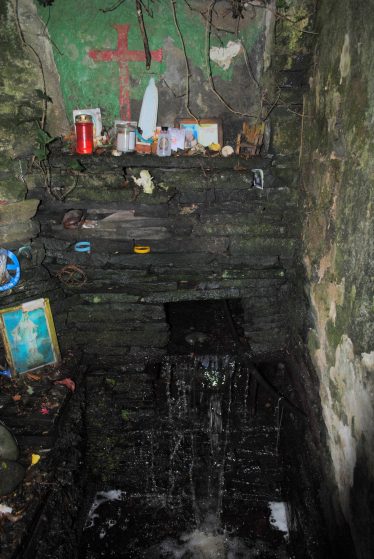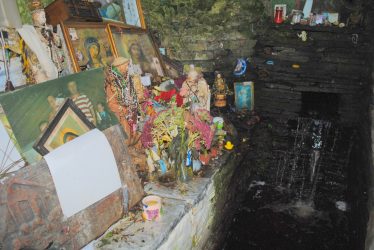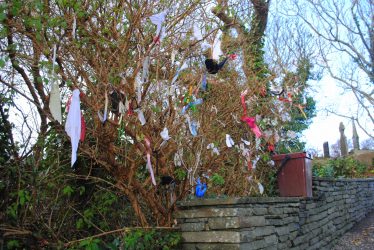Saint Bridget's Holy Well, Saint Brigid's Well, Ballysteen







Townland: Ballysteen, Liscannor
Description of Holy Well and Landscape Setting
The well lies beside Considine’s Bar on the Moher Road in an area set aside for the well house and the way up to the graveyard above. This could be Clare’s most celebrated holy well. The well house is crowded with remembrance cards, offerings, little statues, rosary beads – all brought in thanksgiving or as part of a request to the well and the saint.
Saint and Feast Day Associated with Holy Well
1st February, Saint Brigid’s Day, is the feast day observed at the well, with many pilgrims visiting. There is a second gathering which takes place on 15th August, the feast of the Assumption of the Blessed Virgin Mary. When completing a pilgrimage, the site is considered to be in two parts. The upper sanctuary, known as ‘Ula Uachtarach’, includes a rag tree and the graveyard where some of the members of the royal O’ Brien clan are known to be buried. The lower sanctuary, or ‘Ula Íochtarach’, is where the holy well and statue of Saint Brigid are located. The ‘turas’ or pilgrimage of the site begins with prayers on the lower level and progresses on to the upper level. Many pilgrims circle the garden in front of the well house. The word ‘Ula’ is very old Irish and usually refers to a cairn or penitential station.
Natural Heritage around the Holy Well
There are some low ash trees around the holy well onto which rag-cloths, or ‘cloothies’, have been fixed. These rag cloths are often left as symbols of concern or illness, which are given into the care of the saint.
Heritage Attractions Nearby
The town of Lahinch and the Cliffs of Moher are less than a 15 minute drive from the holy well site.
Additional Information
The connection between Saint Brigid and the Blessed Virgin Mary at Saint Brigid’s Well is referenced as early as 1814, when it was written that:
‘The tradition about this saint is that she led the Virgin Mary to the place of purification on the 2nd of February, and that the 1st of February was dedicated to herself on that account.’
It is said that Saint Brigid stopped at the site where the well now stands while travelling to Connacht in her chariot.
Máire Mac Neill was a famous folklorist who lived in Corofin and carried out research on Liscannor in her later years. She determined that in all probability, the place where the holy well is located was originally a Lughnasa site. The Lugh referred to here was the old Irish harvest deity, whose feast day was celebrated on 1st August. When changes were made to the calendar in 1751, this feast day became 11th August, which is quite close to the the Christian celebration of the Assumption on 15th August.
Discover More…
Clare County Library, Mason’s Parochial Survey, 1814-1819
Record of Monuments and Places Number
RMP-CL014-02102
Surveyed by Michael Houlihan




No Comments
Add a comment about this page